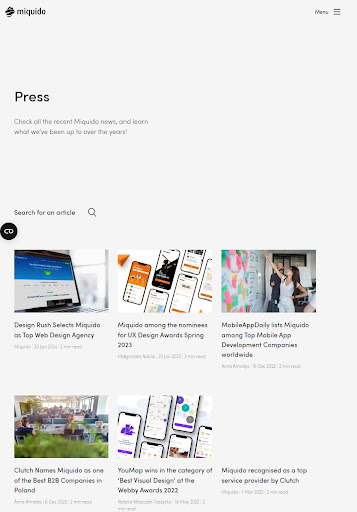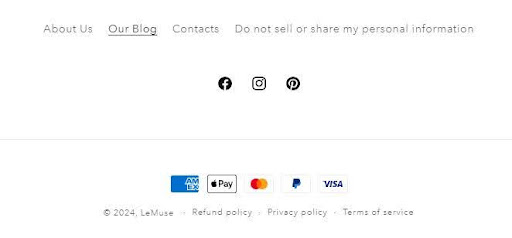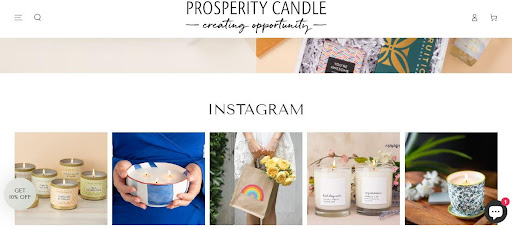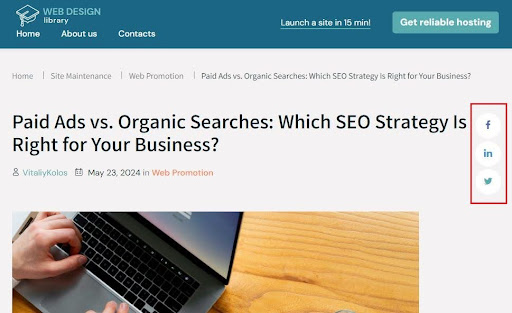6 Effective Ways to Use Your Website as a PR Tool
Your business website is a crucial link between your products or services and your customers. But did you know that you could also harness your website as a PR tool?
When used correctly, your website can significantly amplify your digital PR efforts. This strategy can transform how you connect with your target audience, engage with the media, and even expand your market reach.
From this read, you’ll learn six effective strategies to turn your website into a formidable asset for PR. Ready to see how? Let’s dive in and explore these transformative strategies. But first:
What Is PR?
In simple words, PR, or public relations, is about managing how people view and feel about your brand. It's usually handled by PR professionals who work to create positive connections between a company and its audience. This can involve everything from handling press releases and social media platforms to organizing events and managing crises.
The goal is to build a strong, positive reputation that helps your business grow. In situations like launching a new product, dealing with a company crisis communication, or just maintaining your market presence, digital PR plays a key role.
6 Ways to Use Website as a PR Tool
Now, let’s look at six smart ways to use your website to improve your PR and connect better with your target audience:
1. Use Geolocation to Reach a Wider Audience
Geolocation is a technology that uses data from a visitor’s device, such as an IP address, to determine their geographic location. You can integrate this technology into your website to tailor content, offers, and news to align with the specific locale of each visitor.
This customization improves the user experience by making your site feel more relevant and engaging. It also shows that your brand values and understands its diverse audience.
Here are practical steps to implement geolocation effectively:
- Integrate geolocation APIs: Digital tools like Google Maps API or IP-based location services can help business owners pinpoint where users are accessing your site.
- Customize content: Provide location-specific information such as promotions, products, local news stories, or events that will resonate with users in that area.
- Adjust language settings: Automatically switch the language of your website based on the visitor’s location to make your site more accessible and welcoming.
With geolocation, you can personalize the browsing experience, enhancing how visitors interact with your site and ultimately boosting your brand’s image and reach.
2. Create an Online Newsroom for Your Brand
Some businesses create a dedicated web page on their websites to save time for those looking to write about your company. It’s a space where relevant journalists, bloggers, potential customers and employees, and anyone else interested, can find everything they need to know about your business.
This space is crucial for managing your brand's public image and making sure that the media and your audience have easy access to timely and accurate information. Here’s an example:

An effective online newsroom is always current. Ensure you regularly update it with the latest press releases, news articles, and official statements to keep the content relevant.
If you don’t have the time to create this content, you can leverage the services of a good PR agency. Just make sure the company specializes in your niche. If you’re in the restaurant industry, a food PR agency is your best bet. It can help you tailor your newsroom to appeal specifically to food journalists and influencers. It can fine-tune your messages so they can catch the attention of the food media and get picked up.
Also, your newsroom should be organized for easy access, with a clear structure that uses categories and tags to sort content and includes a search function for efficient navigation.
3. Optimize Website for SEO
Search Engine Optimization (SEO) is essential for drawing organic traffic to your website. Optimizing your site for search engines means your brand's message and content are more likely to appear in front of potential customers when they search relevant keywords. Thus, SEO efforts help maintain a strong, positive public image.
Start by focusing on keywords that are relevant to your content and niche. So, for example, if you sell linen handbags, keywords such as "sustainable linen handbags," "eco-friendly handbags," or "linen handbags online" might be relevant. Incorporate these keywords naturally into your titles, headings, and meta descriptions to help search engines understand and prioritize your site's content.
Next, prioritize improving your site’s speed as search engines, like Google, favor websites that load quickly. Compress images, streamline code, and consider using a content delivery network (CDN) to enhance performance.
Also, ensure your website is mobile-friendly. With 60% of browsing coming from smartphones, a responsive design is critical so that your site provides an optimal viewing experience on any device.
Furthermore, link building is a powerful strategy to improve your SEO. If you’re selling software-as-a-service, partnering with a SaaS link building agency can significantly enhance your efforts. These specialists can help develop strategies that will ultimately ensure reputable sites in your industry carry your valuable backlinks. That, in turn, will boost your search engine rankings and enhance your visibility online.
4. Integrate Social Media
Social media and websites should work hand in hand. Your website can distribute your social media content to your site visitors. In the same manner, social media platforms can promote your site content to a social media audience.
Effective ways to integrate social media into your website include:
- Link directly to your social profiles: Ensure visitors can easily find your social media pages from your website. Include icons that link to your profiles in headers or footers (below).
- Embed social feeds: Integrate parts of your social media feed directly into your website. This keeps your content fresh and shows that your brand is active and engaged.
- Encourage sharing: Add social share buttons on your blog posts or main web pages. This will make it easy for site visitors to promote your website content on social media.



By integrating social media, you can transform your website into a dynamic hub. Your site can effectively enhance your digital PR by promoting the positive values showcased in your social media content. The incorporation of social share buttons, links, and feeds into your site also shows visitors you value audience engagement, which again is a plus for your brand from a consumer’s perspective.
For businesses aiming to refine their digital strategy, structuring your services is critical. One way to optimize your PR potential is by designing distinct social media marketing packages that align with client needs. These packages allow businesses to present clear, value-driven options tailored to different audiences.
5. Craft an Inspiring ‘About Us’ Page
Your website’s 'about us' page is where you list facts about your company. It’s also a fantastic opportunity to tell your brand's story in a way that resonates with visitors. This page can serve as a powerful public relations tool by building a connection with your audience.
To craft an inspiring 'Who we are' page, begin by telling the story of your company. Share what inspired you to start, the challenges you’ve faced, and what makes you stand out in your industry. This narrative approach makes your brand more relatable and memorable.

If you have a team behind you, highlight them. Introduce the people behind the brand. Include photos and brief bios that showcase their expertise and personality. This humanizes your company and can forge an even stronger connection with your audience.
It’s also effective to include testimonials and showcase achievements on this page. Sharing quotes from satisfied customers or listing awards and recognitions can build credibility and trust.
Additionally, use high-quality images or videos that reflect your brand's ethos and values. Visual elements make the content more engaging and can help convey your story more effectively.
An effectively designed 'about us' page turns a simple narrative into one that ensures a compelling connection, making your brand more trustworthy and memorable.
6. Create Other Compelling Site Content
Don’t just craft press releases, statements, news articles, and content for your About Us page. Make sure you leverage other types of site content for PR as well.
Informative blog posts, how-to guides, or video tutorials should be part of your content marketing strategy. These types of educational, high-quality content are also powerful tools for public relations. They grab attention and establish your brand’s authority.
To ensure this informative content stands out, start by addressing your target audience’s needs and interests. You can get this information using surveys and website and even social media analytics tools.
Incorporating visually appealing elements into your informative pieces is also recommended. People are naturally drawn to attractive designs. So, include relevant and high-quality images in your written pieces. Use catchy visuals in your video tutorials.
Also, encourage interaction by ending your useful content with questions or calls to action that invite comments or content sharing. This type of engagement boosts visibility and fosters a sense of community around your brand.
As a final tip, don’t forget to keep your relevant content fresh and varied to maintain visitor interest and encourage return visits.
Conclusion
Your website is often the first point of contact for potential customers and partners, making it a pivotal element in your public relations strategy. It's where people come to learn who you are and what you stand for. By implementing these six effective strategies, you can transform your website into a dynamic and proactive digital PR tool.
Summing up, leverage geolocation customization and an organized newsroom to ensure an excellent user experience. SEO optimization boosts your online visibility, drawing in more potential customers. Integrating social media into your site can help promote your content to broader audiences and increase engagement. Creating an inspiring 'about us' page and other compelling content keeps visitors engaged and encourages repeat visits.
So, take the first step today! Start using your website as a PR tool and tell the whole world your brand's story.
Chris Norton is the host of Embracing Marketing Mistakes, a UK Top 10 marketing podcast that celebrates marketing fails, and the founder of award-winning B2C specialist PR agency Prohibition. His social media training blog is listed in the UK's top 10 PR blogs. For tons of digital PR tips, you can follow Chris here @chris_norton.

Copyright © . All Rights Reserved